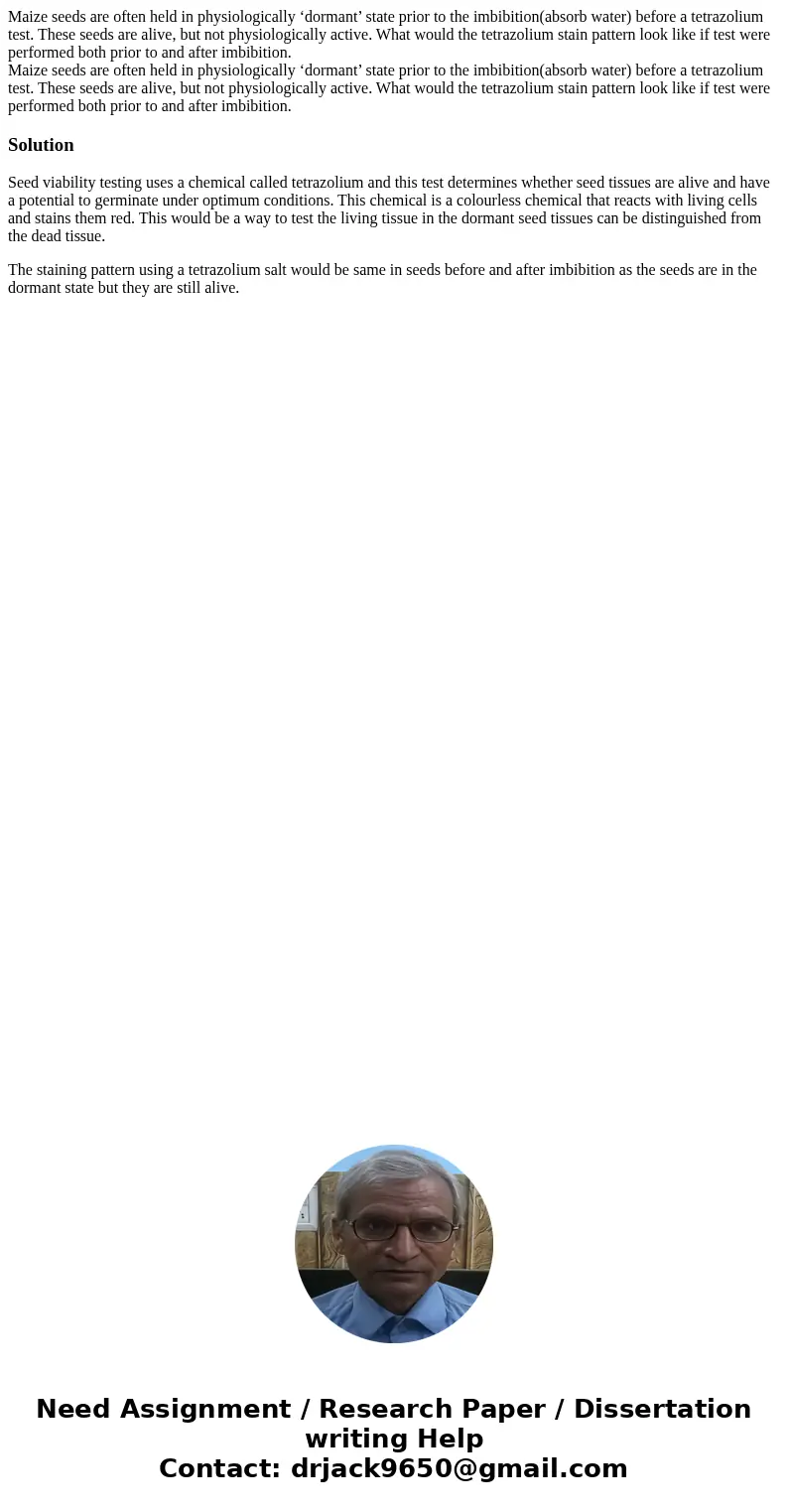Maize seeds are often held in physiologically dormant state
Maize seeds are often held in physiologically ‘dormant’ state prior to the imbibition(absorb water) before a tetrazolium test. These seeds are alive, but not physiologically active. What would the tetrazolium stain pattern look like if test were performed both prior to and after imbibition.
Maize seeds are often held in physiologically ‘dormant’ state prior to the imbibition(absorb water) before a tetrazolium test. These seeds are alive, but not physiologically active. What would the tetrazolium stain pattern look like if test were performed both prior to and after imbibition.
Solution
Seed viability testing uses a chemical called tetrazolium and this test determines whether seed tissues are alive and have a potential to germinate under optimum conditions. This chemical is a colourless chemical that reacts with living cells and stains them red. This would be a way to test the living tissue in the dormant seed tissues can be distinguished from the dead tissue.
The staining pattern using a tetrazolium salt would be same in seeds before and after imbibition as the seeds are in the dormant state but they are still alive.

 Homework Sourse
Homework Sourse